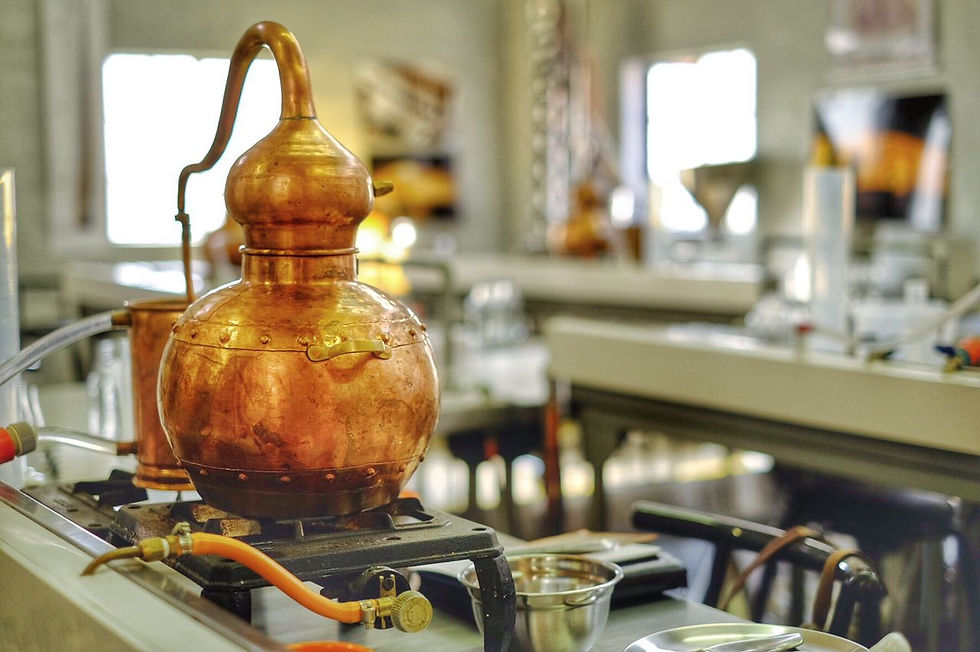Whiskey Distillation Broken Down For You
- brittany wolfe
- Sep 24, 2019
- 3 min read

Whiskey is being made for centuries and over the years the process may have changed or tools added or differed but what remains constant are the three basic ingredients, namely water, barley, and yeast. When you embark on a whiskey tour in Denver, this is something that will be highlighted.
Step 1: Malting
Barely contains starch and it is that starch that needs to be converted to soluble sugar to produce alcohol. For this to happen, the barely must undergo germination and this process is called malting. Each distiller has its own preference for barley but keeps in mind they need high volumes of soluble sugar. The barley is soaked in warm water for 2-3 days and then laid out preferably on top of a building while constantly rotated to maintain the temperature. Once the barley starts to shoot, the germination needs to be stopped and hence the barley in dried in a kiln. Traditionally peat is used to fire the kiln. The type of peat used and the time the barley spends in its smoke determines the final flavor. The resultant barley is called malt and is ground in a mill removing any husks or other debris
Step 2: Mashing
The ground malt, called grist is now added to warm water to extract the soluble sugars. The water is usually procured from a local reliable source such as a lake or river. The water has a big impact on the final spirit since what it passes through is a major factor. The combination of water and malt is called mash. It is poured in a large vessel called a mash tun and stirred for several hours. The sugars in the malt are dissolved in the process and get drawn off through the bottom. The resultant resting liquid is called wort. The process is repeated thrice, with the water temperature being increased each time to extract maximum sugar. The end product from the first two batches is used. The third bach is put back into the grist.
Step 3: Fermentation
Wort is cooled and put into large tanks called washbacks. Traditionally made of wood, though stainless steel is also being used these days. Yeast is added for the fermentation process and it turns the wort into alcohol. Similar to barley, each distiller prefers different options for yeast. The entire fermentation process usually takes 48 hours. The liquid at this point is called wash and is low on Alcohol by Volume(ABV). It is then further distilled to get the resultant whiskey.
Step 4: DIstillation
InScotland, the wash is distilled twice while in Ireland it is distilled thrice. In the case of double distillation, the stills are made from copper which are the best material fit for extracting impurities from the spirit. The shape of the still deeply affects the final turnout of the spirit. Taller stills with longer necks give out finer, lighter spirits, while shorter, fatter stills turnout a fuller, richer spirit. The stills work in pairs, the wash will first enter the larger wash still and is heated by coal, gas or steam. The vapor rises up the neck of the still and condenses. The resultant liquid is called low wines. The low wines are passed on to a second smaller still known as the spirit still. Alcohol from the beginning of distillation anr very strong and pungent, whereas towards the end they are weak but still pungent. It is only the alcohol from the middle distillation that is used and is skillfully removed by a stillman and collected through the spirit safe. The two separate alcohol from the beginning and end are mixed with the next batch of low wines and re-distilled. The middle distillation batch is then matured which becomes whiskey.
Step 5: Maturation
The resultat spirit is put into oak casks and then stored. The most common oaks used are those previously used in the American bourbon and Spanish sherry industries. The spirit must mature in casks for at least three years for it to be called whiskey in Scotland. Your whiskey tour in Denver will give you a similar fact and note. Wood being porous will take in the air from its surroundings giving the whiskey some unique characteristics. While in the maturing stage, every year roughly 2% of the whiskey is lost due to natural evaporation. This is called the angel’s share and is the reason why older whiskeys are not readily available and costs more.







Comments